Abstract
Twenty-four per cent of 2315 patients admitted to the intensive care unit of St Thomas's Hospital in the 4 year period from November 1969 became colonized or infected with Klebsiella species. Capsular typing of 986 klebsiella isolates from 551 patients showed that there were 695 patient-isolates, mostly derived from the respiratory tract. Capsular types 47 and 21 were the commonest types and together accounted for 19.9% of the patient-isolates. The 14 commonest types accounted for 47.3% of all patient-isolates and all these strains showed clustering, strongly suggesting a changing common source, cross infection, or both.
Full text
PDF
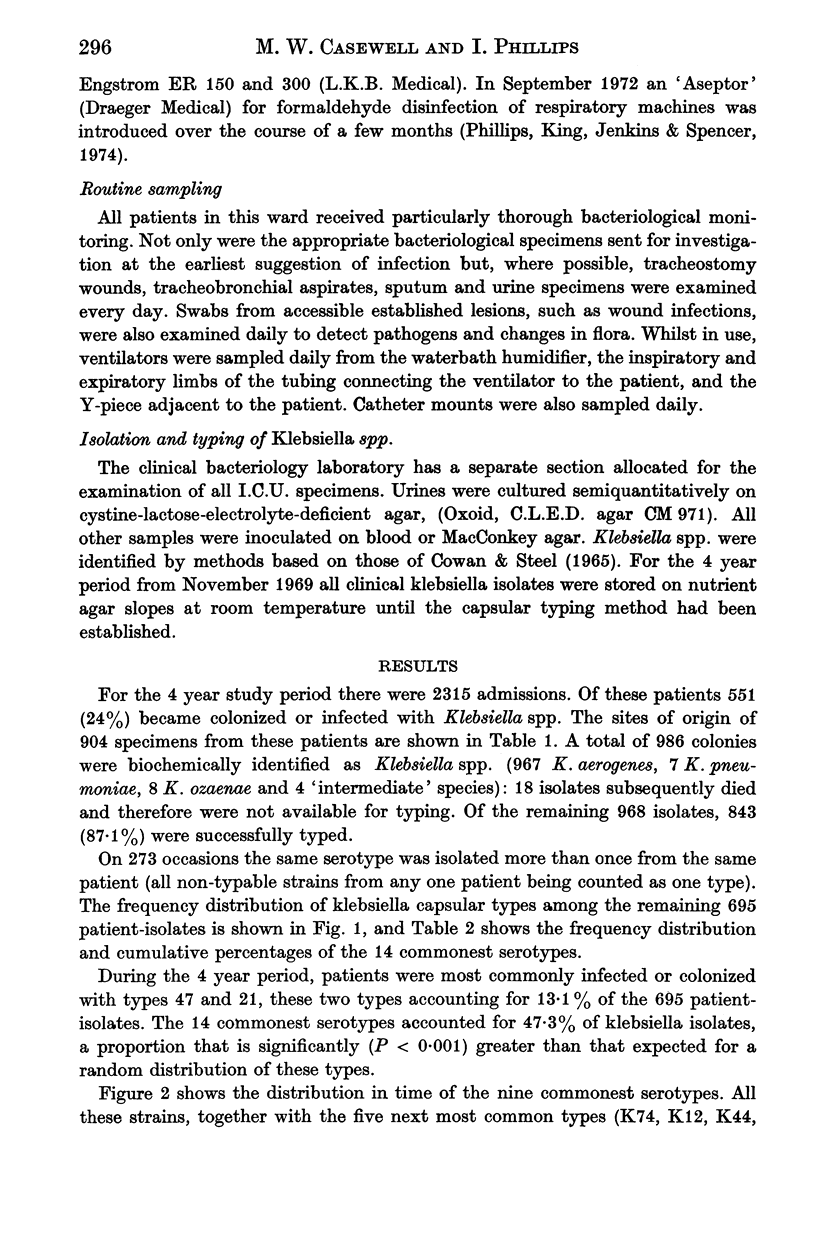
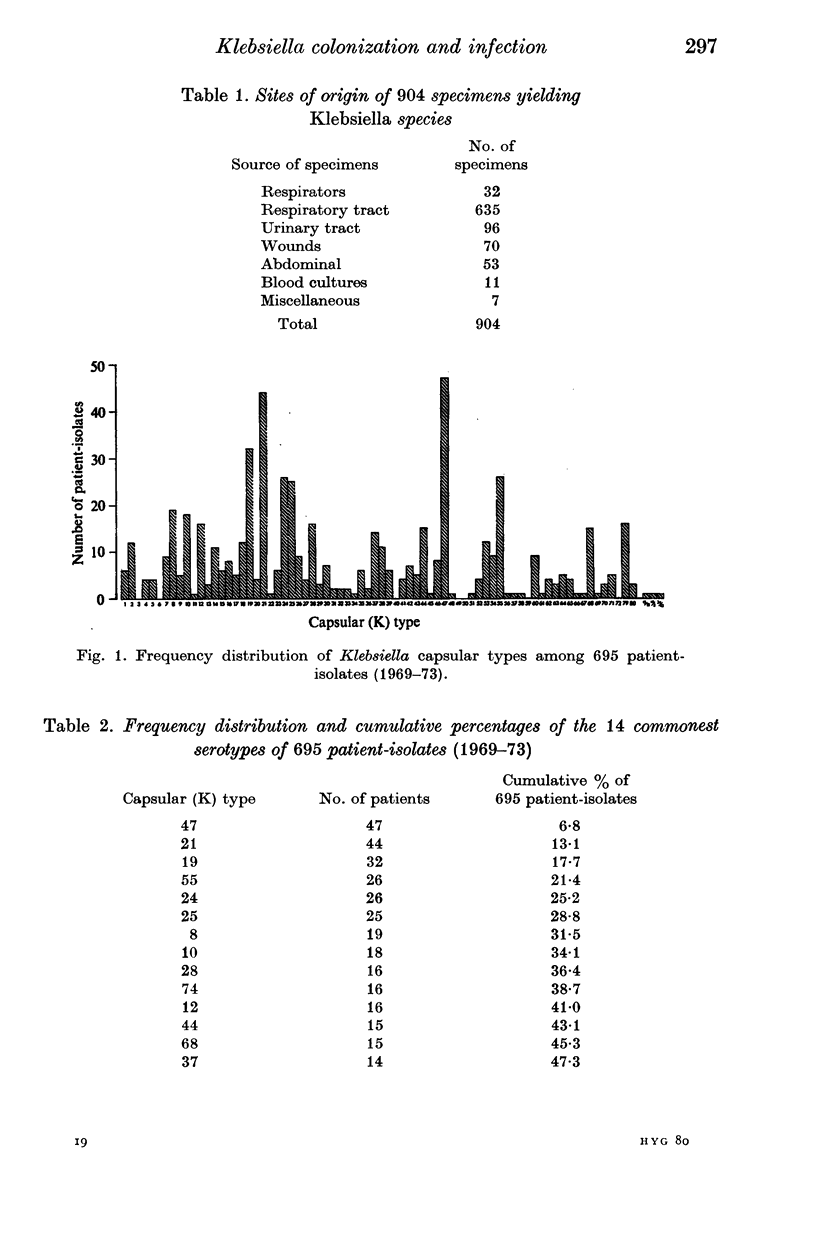
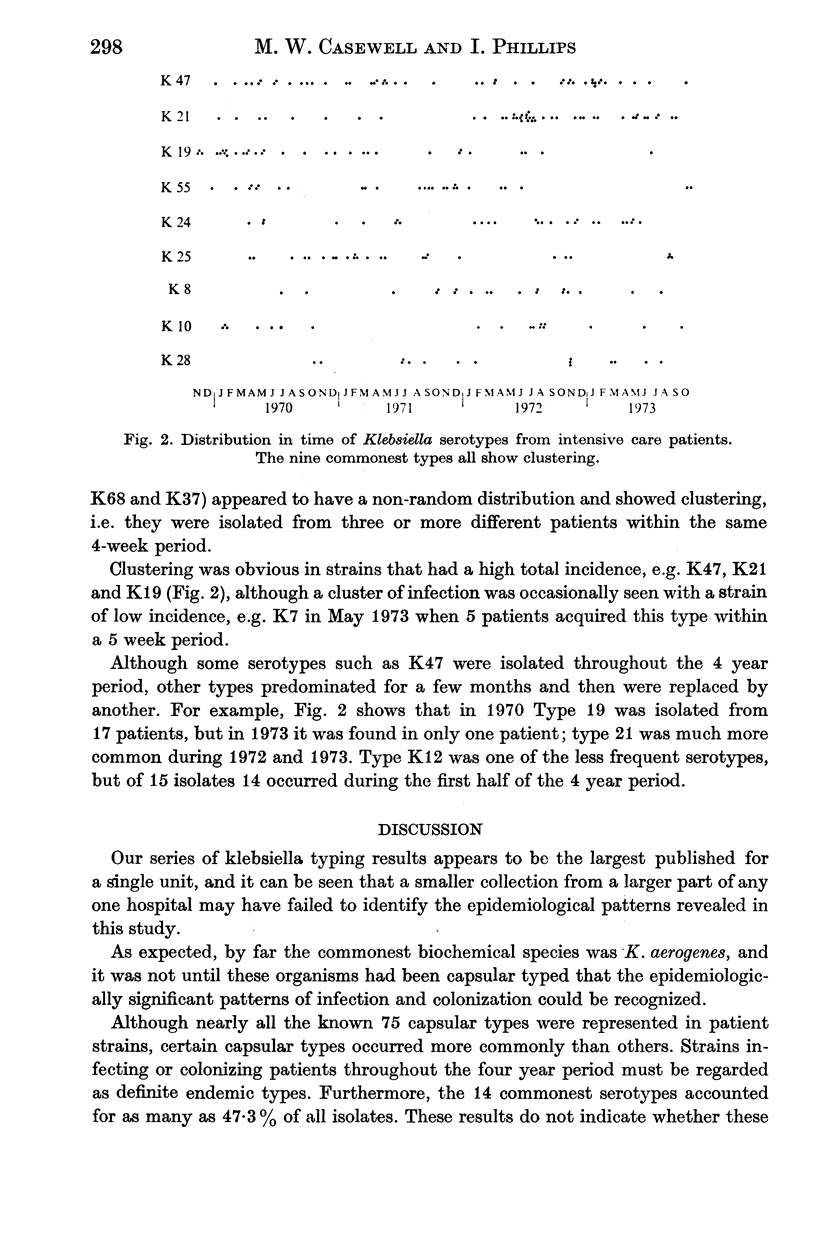
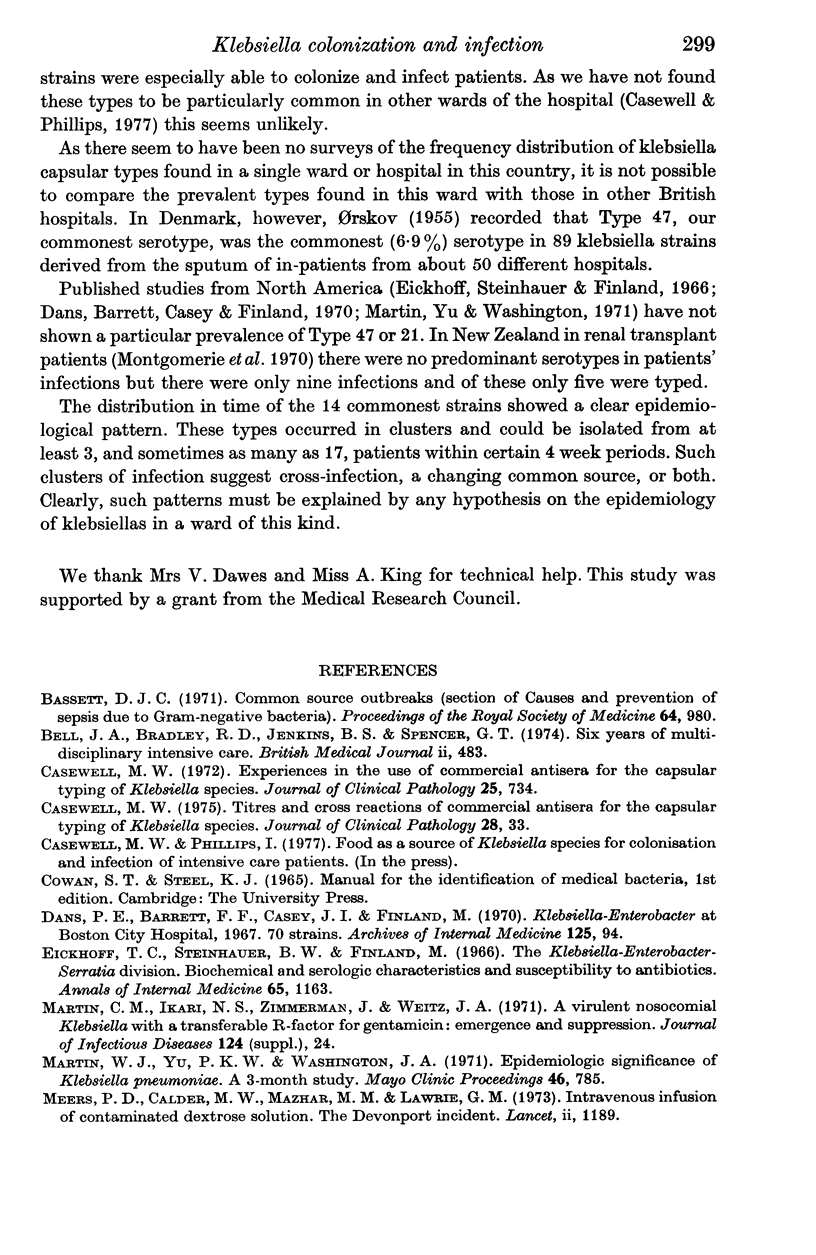
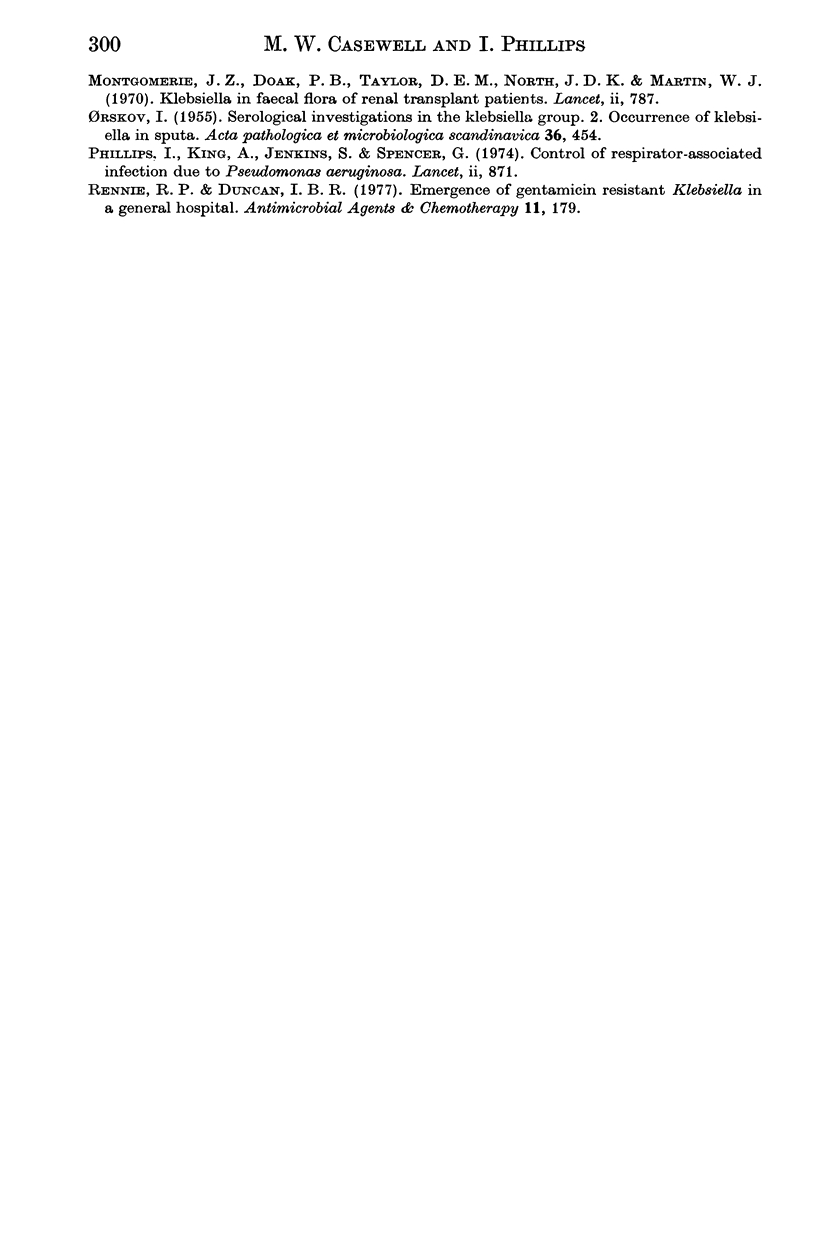
Selected References
These references are in PubMed. This may not be the complete list of references from this article.
- Bassett D. J. Causes and prevention of sepsis due to Gram-negative bacteria. Common-source outbreaks. Proc R Soc Med. 1971 Sep;64(9):980–986. doi: 10.1177/003591577106400944. [DOI] [PMC free article] [PubMed] [Google Scholar]
- Bell J. A., Bradley R. D., Jenkins B. S., Spencer G. T. Six years of multidisciplinary intensive care. Br Med J. 1974 Jun 1;2(5917):483–488. doi: 10.1136/bmj.2.5917.483. [DOI] [PMC free article] [PubMed] [Google Scholar]
- Casewell M. W. Experiences in the use of commercial antisera for the capsular typing of klebsiella species. J Clin Pathol. 1972 Aug;25(8):734–737. doi: 10.1136/jcp.25.8.734. [DOI] [PMC free article] [PubMed] [Google Scholar]
- Casewell M. W. Titres and cross reactions of commercial antisera for the capsular typing of Klebsiella species. J Clin Pathol. 1975 Jan;28(1):33–36. doi: 10.1136/jcp.28.1.33. [DOI] [PMC free article] [PubMed] [Google Scholar]
- Dans P. E., Barrett F. F., Casey J. I., Finland M. Klebsiella-Enterobacter at Boston City Hospital, 1967. Arch Intern Med. 1970 Jan;125(1):94–101. [PubMed] [Google Scholar]
- Eickhoff T. C., Steinhauer B. W., Finland M. The Klebsiella-Enterobacter-Serratia division. Biochemical and serologic characteristics and susceptibility to antibiotics. Ann Intern Med. 1966 Dec;65(6):1163–1179. doi: 10.7326/0003-4819-65-6-1163. [DOI] [PubMed] [Google Scholar]
- Martin W. J., Yu P. K., Washington J. A., 2nd Epidemiologic significance of Klebsiella pneumoniae. A 3-month study. Mayo Clin Proc. 1971 Dec;46(12):785–793. [PubMed] [Google Scholar]
- Meers P. D., Calder M. W., Mazhar M. M., Lawrie G. M. Intravenous infusion of contaminated dextrose solution: The Deveonport incident. Lancet. 1973 Nov 24;2(7839):1189–1192. doi: 10.1016/s0140-6736(73)92950-4. [DOI] [PubMed] [Google Scholar]
- Montgomerie J. Z., Doak P. B., Taylor D. E., North J. D., Martin W. J. Klebsiella in faecal flora of renal-transplant patients. Lancet. 1970 Oct 17;2(7677):787–792. doi: 10.1016/s0140-6736(70)91458-3. [DOI] [PubMed] [Google Scholar]
- Phillips I., King A., Jenkins S., Spencer G. Control of respirator-associated infection due to Pseudomonas aeruginosa. Lancet. 1974 Oct 12;2(7885):871–873. doi: 10.1016/s0140-6736(74)91204-5. [DOI] [PubMed] [Google Scholar]
- Rennie R. P., Duncan I. B. Emergence of gentamicin-resistant Klebsiella in a general hospital. Antimicrob Agents Chemother. 1977 Feb;11(2):179–184. doi: 10.1128/aac.11.2.179. [DOI] [PMC free article] [PubMed] [Google Scholar]
- ØRSKOV I. Serological investigations in the Klebsiella group. II. Occurrence of Klebsiella in sputa. Acta Pathol Microbiol Scand. 1955;36(5):454–460. doi: 10.1111/j.1699-0463.1955.tb04641.x. [DOI] [PubMed] [Google Scholar]


